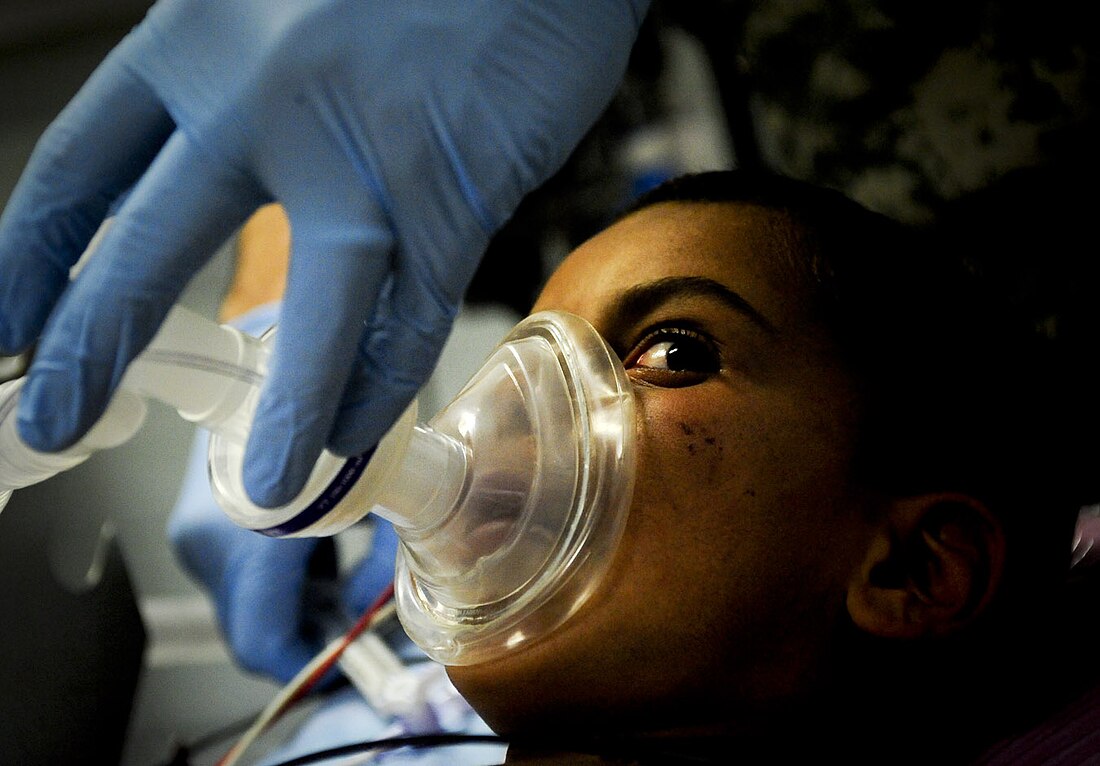Anesthetic
a gas that helps you to feel less pain during a surgery From Wikipedia, the free encyclopedia
Remove ads
An anaesthetic (anesthetic) is a substance that either stops pain, or causes the user to sleep. There are two types: general anaesthesia causes a reversible loss of consciousness. Local anaesthetic cause a loss of sensitivity (and pain) on a local area.


Anaesthetics can be rubbed onto the skin, given by injection ("shot"), or given as a gas to breathe. Anaesthesia blocks pain during operations. This lets patients undergo surgery and other procedures without the distress and pain they would normally feel. It comes from the Greek roots an-, "without" and aesthetos, "perceptible, able to feel".
The most famous anaesthetic, ether, may have been made as early as the 8th century,[1][2][3] but it took many centuries for its anaesthetic importance to be appreciated.
The history of modern anaesthetic began with Joseph Lister. Before it, people sometimes used cocaine, alcohol, and other drugs to get the same effects. Modern anaesthesia is complex, with a combination of anesthesia, analgesia and muscle relaxation. These three are known as the "triad of anesthesia".
Remove ads
References
Related pages
Wikiwand - on
Seamless Wikipedia browsing. On steroids.
Remove ads
